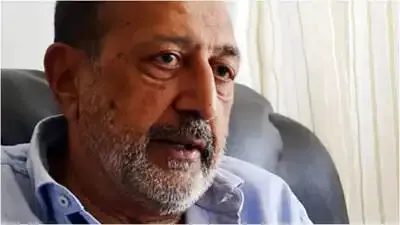The Rs 3,706 crore HCL-Foxconn outsourced semiconductor assembly and test (OSAT) joint venture, which received Cabinet approval on Wednesday, has been hailed as a crucial step toward strengthening the domestic smartphone manufacturing ecosystem. The facility, which will be built in Jewar in Uttar Pradesh and produce display driver chips, will provide an impetus to India’s localisation efforts, especially in the booming smartphone manufacturing ecosystem, experts said.
The venture marks the sixth semiconductor unit under the India Semiconductor Mission (ISM), and the first such unit in Uttar Pradesh. The plant, which is going to be set up near Jewar airport in Yamuna Expressway Industrial Development Authority (YEIDA), will start production in 2027, Union minister for electronics and IT Ashwini Vaishnaw said while announcing the Cabinet approval on Wednesday. He said the unit is designed for 20,000 wafers per month for wafer-level packaging and can make 36 million chips a month.
“The demand for display drivers and therefore chips which go into these drivers has gone up tremendously in the last few years as electronics manufacturing in India has grown by five times,” Vaishnaw said. He said the plant will meet 40% of India’s capacity for display drivers and the requirements of the “rest of the world” for Foxconn. Once the display driver chip is made in India, it could lead to the manufacturing of display panels in the country, he said.
Subsidy of Rs 1,800 cr from Centre
The Centre will subsidise the project to the tune of Rs 1,800 crore while the UP government will do so by Rs 600 crore. Prime Minister Narendra Modi posted on X: “India’s strides in the world of semiconductors continue! Today’s Cabinet decision regarding the establishment of a semiconductor unit in Uttar Pradesh will boost growth and innovation. It will create innumerable opportunities for the youth as well.”
India is ramping up its ambitions to be a global hub for electronics and chip manufacturing and design. On Tuesday, Vaishnaw had announced that Japanese chipmaker Renesas will be designing the country's first 3 nm chip at its newly launched R&D facilities in Noida and Bengaluru. India’s annual electronics production crossed Rs 11 lakh crore ($129 billion), Vaishnaw said recently. The country is targeting $500 billion in domestic electronics production by FY31. It is projected to reach $300 billion by next year.
ET was the first to report in July 2023 that the HCL Group is planning to enter semiconductors. The company started as a maker of computer hardware and peripherals before establishing its software credentials. ET had subsequently reported on the joint venture with Foxconn and reported in September 2024 that the joint venture had been allotted land in the YEIDA region, close to the upcoming Jewar airport and was likely to get approval soon. This is Foxconn’s second attempt at a chip packaging plant in India. Its first attempt with Vedanta fell through.
“It’s good that a company like HCL which was a hardware company and moved to services and software products is moving back to hardware. This is the company coming full circle,” Ministry of Electronics and Information Technology (MeitY) secretary S Krishnan told ET. “For Foxconn, it also ties into their larger work where the chips packaged here could be an input for their display module assembly unit coming up in Tamil Nadu.”
Display drivers are used in a wide range of applications such as large-screen TVs, desktop monitors, laptops, tablets, smartphones and automotive displays. A display driver chip acts as an interface between microprocessors or digital systems and displays such as LCD or OLED screens.
The move is significant, particularly with India producing 99.2% of the mobile phones sold in the country, said Vivek Tyagi, member of the India Electronics and Semiconductor Association (IESA) executive council. “Display driver chips are critical to smartphones,” Tyagi said. “This JV is the first display driver chip-related semiconductor unit. It is different from the four OSATs and the fab that was previously announced. We have so far imported these chips like all other chips. As this JV's volumes go up in production, the chip cost will come down.”
The venture marks the sixth semiconductor unit under the India Semiconductor Mission (ISM), and the first such unit in Uttar Pradesh. The plant, which is going to be set up near Jewar airport in Yamuna Expressway Industrial Development Authority (YEIDA), will start production in 2027, Union minister for electronics and IT Ashwini Vaishnaw said while announcing the Cabinet approval on Wednesday. He said the unit is designed for 20,000 wafers per month for wafer-level packaging and can make 36 million chips a month.
“The demand for display drivers and therefore chips which go into these drivers has gone up tremendously in the last few years as electronics manufacturing in India has grown by five times,” Vaishnaw said. He said the plant will meet 40% of India’s capacity for display drivers and the requirements of the “rest of the world” for Foxconn. Once the display driver chip is made in India, it could lead to the manufacturing of display panels in the country, he said.
Subsidy of Rs 1,800 cr from Centre
The Centre will subsidise the project to the tune of Rs 1,800 crore while the UP government will do so by Rs 600 crore. Prime Minister Narendra Modi posted on X: “India’s strides in the world of semiconductors continue! Today’s Cabinet decision regarding the establishment of a semiconductor unit in Uttar Pradesh will boost growth and innovation. It will create innumerable opportunities for the youth as well.”
India is ramping up its ambitions to be a global hub for electronics and chip manufacturing and design. On Tuesday, Vaishnaw had announced that Japanese chipmaker Renesas will be designing the country's first 3 nm chip at its newly launched R&D facilities in Noida and Bengaluru. India’s annual electronics production crossed Rs 11 lakh crore ($129 billion), Vaishnaw said recently. The country is targeting $500 billion in domestic electronics production by FY31. It is projected to reach $300 billion by next year.
ET was the first to report in July 2023 that the HCL Group is planning to enter semiconductors. The company started as a maker of computer hardware and peripherals before establishing its software credentials. ET had subsequently reported on the joint venture with Foxconn and reported in September 2024 that the joint venture had been allotted land in the YEIDA region, close to the upcoming Jewar airport and was likely to get approval soon. This is Foxconn’s second attempt at a chip packaging plant in India. Its first attempt with Vedanta fell through.
“It’s good that a company like HCL which was a hardware company and moved to services and software products is moving back to hardware. This is the company coming full circle,” Ministry of Electronics and Information Technology (MeitY) secretary S Krishnan told ET. “For Foxconn, it also ties into their larger work where the chips packaged here could be an input for their display module assembly unit coming up in Tamil Nadu.”
Display drivers are used in a wide range of applications such as large-screen TVs, desktop monitors, laptops, tablets, smartphones and automotive displays. A display driver chip acts as an interface between microprocessors or digital systems and displays such as LCD or OLED screens.
The move is significant, particularly with India producing 99.2% of the mobile phones sold in the country, said Vivek Tyagi, member of the India Electronics and Semiconductor Association (IESA) executive council. “Display driver chips are critical to smartphones,” Tyagi said. “This JV is the first display driver chip-related semiconductor unit. It is different from the four OSATs and the fab that was previously announced. We have so far imported these chips like all other chips. As this JV's volumes go up in production, the chip cost will come down.”





